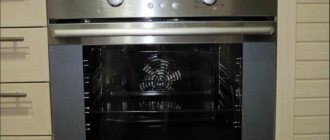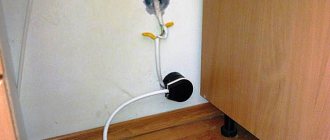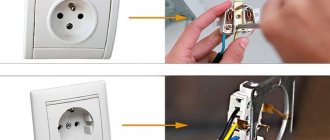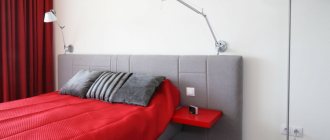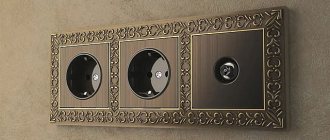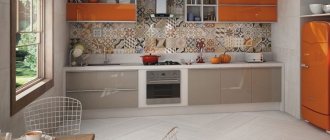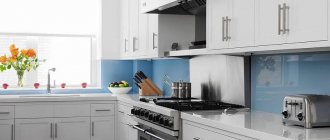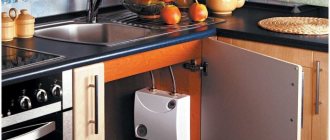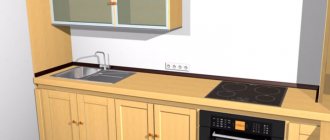Modern kitchens cannot do without a huge number of various household appliances, the operation of which requires a power source. In this matter, the main thing is not to overdo it and maintain the chosen interior style. Pull-out sockets for the kitchen are considered quite an interesting and unusual choice. Often such products are designed for countertops. They help organize your workspace rationally and correctly.
Possible options
Modules of this kind are considered an original solution in any kitchen. They are practical to use and often complement the design of the room. Currently, you can purchase a variety of models, unusual designs in the desired color.
A luxurious solution is the use of sockets built into the kitchen cabinet. This is an excellent analogue of an extension cord, which significantly simplifies the operation of household appliances.
According to their design, sockets are distinguished between horizontal and vertical placement.
Vertical sockets are manufactured with different heights and have certain functionality. Particularly popular are low versions in which the connectors are arranged in a circle.
There are options for two, three, five or more blocks, placed one above the other. They are relevant not only for connecting kitchen appliances, but also, for example, chargers.
Horizontal blocks are made with different numbers of power connectors. Now you can even purchase sockets with integrated input for the Internet, HDMI and USB.
Depending on the design, built-in blocks are:
- rotary;
- away.
Sockets can change their position in space around an axis by 360 or 180 degrees, respectively.
A number of manufacturers equip their products with additional lighting, due to which the room acquires a special, mysterious atmosphere.
The greatest reliability and ease of operation are typical for rotary sockets. Disadvantage: difficulty in simultaneous use of several devices with an “L-shaped” plug.
Recessed socket blocks are usually located in various places in the kitchen area, including: the countertop; wall cabinet; baseboard under the apron.
They are considered universal, since installation of the same block is often possible in different parts and elements of the kitchen. This type of socket can be placed in almost any convenient place on the headset.
It is important to consider that when choosing furniture fittings, you must always pay attention to its degree of protection. It is desirable that the hidden modules meet the IP44 requirements, since the kitchen is considered a room with high humidity, as well as a place where there is a possibility of small particles, dirt, etc. getting into the working elements.
Peculiarities
There are certain rules for installing sockets, dictated by ease of use and safety precautions. It is considered optimal to place sockets in such a position that all kitchen electrical appliances can be placed on three levels:
- lower;
- average;
- top.
The lower connection level includes appliances such as a washing machine, dishwasher, oven or electric stove.
The middle tier contains household appliances that can be placed on the countertop:
- coffee maker;
- Electric kettle;
- toaster;
- blender;
- electric oven;
- microwave;
- multicooker.
The countertop has sockets for mid-level appliances. They can be recessed into the working surface of the table or placed on the apron. This is the most popular option for installing built-in units in kitchen furniture.
Specifics of retractable blocks
Considering the comfort and ease of use of hidden sockets, the fittings can even be compared with built-in household appliances and corresponding cabinet kitchen furniture.
Thanks to their small dimensions, the blocks help to rationally use free space and simplify food preparation.
In fact, you can actually install them yourself, since you won’t have to install electrical lines and install boxes for sockets.
Hidden sockets can be chosen in almost any design and functionality. It would be good if they had grounding contacts.
The fittings are supplied with a 1-3 meter cord and plug, making it possible to connect it to household voltage. In some cases, units are produced without a plug, which allows you to further increase the cable length. An excellent choice are reusable collapsible forks.
The design of the retractable socket block is extremely clear. Initially it is hidden in the countertop or upper cabinet. To reach the sockets, you need to lightly press the top panel. After this, the block “moves out” by 10-20 mm, and you can manually move it to the required height or fix it in a given position - there is a corresponding button on the side. This way, you can do without carrying anything in the kitchen and not have to look for a free socket on the apron.
After finishing work with the retractable unit, it can be easily hidden in the tabletop by applying light pressure.
The vertical version can be equipped with additional ports for connecting audio, video equipment, devices with USB connectors, and others. There are also special blocks that are retracted into a niche along with the plugs of connected devices.
Rotary pull-out units with a mechanism activated by pressing on the surface of the lid are in great demand. The module moves out with a light touch - while the power sockets can be rotated to the required convenient position, at a given angle.
The angle depends on the selected model and can reach up to 180 degrees. This parameter is usually indicated on the product packaging.
The retractable rotary unit is often not equipped with a wire and plug, so do not forget to provide for this point.
What to look for when choosing a TV
First of all, it’s worth saying a few words about the features of choosing technology.
It is believed that monitors with a diagonal of more than 20 inches can be viewed comfortably at a distance of 2-3 meters. For small ones - with a diagonal of up to 15 inches, this distance is 1.5-2 meters.
Thus, it turns out that in rooms up to 15 sq.m. a TV up to 14 inches will be optimal.
There is another trick from experts: multiply the length of the wall by 6 and you will get the size of the desired diagonal.
Design studio Bureau
Instagram @juli_pisareva
Instagram @alexey_volkov_ab
Instagram @akoda_design
Another important characteristic of the device is the viewing angle. This parameter shows at what angle you can look at the screen so that the picture is not distorted. It is better to choose a model with a high indicator, because rarely does anyone spend time in the kitchen sitting in one place. And even if the installation system is movable, moving it every time is tiring.
As practice shows, LCD models have a worse viewing angle than plasma and LED models. But you should not rely only on the characteristics specified by the manufacturer. It is better to check and compare products in the store.
Pay attention to the volume of the device. There is much less background noise in the living room than in the cooking and eating area: a working hood, refrigerator and oven can drown out speech.
Instagram @fedorova_diz
Instagram @fedorova_diz
Instagram @malakhova_design
Instagram @alexey_volkov_ab
Selection and installation of retractable units
There are no particular problems with how to remove a retractable socket from under the tabletop. The main attention should be paid to the model being purchased and its compliance with key requirements. The right choice allows you to subsequently receive positive emotions from using the right accessories. For an uninitiated buyer, understanding the variety offered on the market turns out to be difficult.
Consider how many power connectors you need in a hidden receptacle. Pay special attention to the total power of the equipment that will be used. Most often these are blocks designed for loads up to 3.5 kW. Relevant information can be found on the product packaging or instructions supplied with it.
Common mistakes when installing hidden sockets
- Do not install sockets in furniture for high-power household appliances, electric stoves, refrigerators, heated floors, or air conditioners. All these devices are connected to wall sockets, with a separate line from the control panel, and have separate protective circuit breakers. This is done for fire safety purposes.
- For drawer outlets, be sure to use flexible stranded wire with rubber insulation. On the wall and drawer, secure it on top of the outer shell with clamps. This eliminates the mobility of wires on the contacts, chafing and shorting of ends.
- Do not connect electric stoves, air conditioners, and other powerful appliances to additional outlets. Their cross-section is not designed for the current consumption of these units; the wires can melt, resulting in a short circuit and fire.
Some information about the manufacturers
When purchasing recessed sockets, you must place your bet on a trusted manufacturer. The most popular today are the products of the German company Evoline, the Swiss company Kondator, and the Italian factory Simon Connect. From the French it is worth highlighting Schneider Electric, the Poles - GTV, and the Russians - Ekoplast. Most often, submersible sockets are made from high-quality and durable materials.
Companies that have been in the kitchen accessories market for a long time try to monitor reviews of their products and guarantee their trouble-free operation. If a regular overhead socket is not suitable, and you don’t have enough money for a good brand, you can easily get by with “Chinese” ones, including Desc Socket or Displace. Mortise blocks are visually very similar to the original prototypes, but may be significantly inferior to them in manufacturing quality.
Chinese sockets, as a rule, are made from very cheap components, which is why their performance is limited to 6-12 months. Problems may arise gradually. At first, the integrated block opens on its own and does not lock in the specified position. After this, the contact weakens, the plastic begins to heat up, which ultimately leads to failure.
It is advisable to protect the corresponding power lines with good differential circuit breakers.
It is incredibly easy to find a suitable option that matches the kitchen interior and furniture design. Recessed, pop-up sockets are available in various colors. Particularly appreciated are options finished in natural gold, silver, bronze, polished stainless steel, with black, white and other coatings. Before purchasing, the selected item should always be checked for damage and completeness.
Optimal location
In each room, residents often or constantly use various electrical appliances. To ensure that all interior items are in their place and sockets are not hidden behind a closet or sofa, you should draw a plan of each room with the indicated dimensions and determine where the furniture, appliances, and lighting will go. It is also necessary to take into account building codes and regulations to ensure fire safety and smooth operation of electrical wiring.
Hallway and corridor
It is better to connect lighting in the hallway using separate switches. Most often, shoe dryers or a vacuum cleaner are used in this room. Therefore, two sockets located in the corner at a height of 30 cm from the floor and 10 cm from the door or furniture will be sufficient. If it is necessary to install additional electrical devices in the hallway, the circuit becomes more complicated.
Bathroom
In the bathroom, a washing machine, shower cabin and water heater can be constantly plugged into sockets. Often you need to use a hairdryer or razor. Large equipment will require separate energy sources, which, according to the rules, should be located no closer than 60 cm from the water source and from the floor. You should buy special waterproof sockets with a cover and IP44 marking - they have a special plastic flange on the inside to drain water if it gets in.
A forced exhaust fan is usually connected to a light switch - if a person enters the bathroom, the hood starts working.
Kitchen
The kitchen leads in the number of constantly working electrical appliances. The main list of equipment constantly connected to the network:
- fridge;
- Dishwasher;
- electric stove;
- microwave;
- TV;
- hood;
- electric kettle;
- washing machine.
Therefore, you need at least eight sockets for constant operation and at least five for small household appliances such as a mixer, coffee grinder or meat grinder.
The main difficulty is the correct location of sockets for built-in appliances - they cannot be placed behind electrical appliances, so it is better to move the energy sources behind adjacent kitchen cabinets. Separate power sources must be installed for the hob and oven - a double socket will not withstand the load.
Living room
This room is used for relaxation and entertainment of household members; it contains a TV, audio center, Wi-Fi router, split system, and local lighting points. These devices are constantly connected; according to safety rules, sockets for them are mounted at a height of 30 cm from the floor and at least 10 cm from door and window openings.
For a split system, the socket should be placed at the top, near the installation site of the indoor unit - this will avoid unsightly wires on the walls.
Bedroom
On bedside tables there are usually phones or tablets that require additional charging. Therefore, the optimal solution would be to place a couple of sockets near the bed, at a distance of 15–20 cm from the tabletop.
It’s convenient to watch your favorite movies and shows while lying in bed, so the TV is usually hung on the wall opposite the head of the bed. You can hide the socket behind the screen panel.
Children's
An outlet for a night light is enough for a small child, but it is worth considering that in a couple of years they will need energy sources for game consoles and charging their phone, tablet, TV and computer. And if there are several children, then the load on the power grid increases.
For children's rooms, it is advisable to buy safe sockets with covers or plugs and place them so that the baby does not reach the hanging wires.
Office or desk
The desktop usually contains a computer, monitor, peripheral equipment, telephone and desk lamp. For comfortable work, you will need at least 6 sockets with a surge protector, and to hide the unsightly tangle of wires, you should mount the electrical accessories at a height of 25–30 cm above the floor and remove the wires under the cable channel.
More about brands
Products from the Polish company GTV (Werkpol) are well known to furniture production specialists. Most often you have to deal with high-quality fittings.
The production of electrical devices has also relatively recently begun under the same brand. The advantage of the products is their relative availability and reliability. The range includes horizontal and vertical electrical sockets.
Legrand is a leader in the production of electrical products. The main “headquarters” is located in France. The holding has mastered the production of 215 product models and received patents for 4,500 of its own projects.
The company's enterprises are located in 80 countries around the world, employing 36,000 people. The company's annual cash turnover reaches 4,500 thousand euros. The common man may be familiar with the following brands of the Legrand group - Vantage, BTicino, Cablofil, Estap.
The domestic market of the Legrand company is represented by electrical fittings, socket blocks of stationary and retractable versions. The products are available in the most popular color options, including white, gold, metallic, black and silver. Sockets are made modular, the total number of connectors in which can reach up to 8 units. Retractable samples are characterized by smooth operation and ease of pressing.
Another serious manufacturer of electrical accessories is the German company Evoline, known for its products since 1964. Today it is one of the European leaders in the development of innovative solutions. Over the entire period of its existence, the manufacturer has officially registered and patented over 300 different discoveries in the field of electrical engineering.
Evoline production facilities are located in Germany, the city of Lüdenscheid. It is here that more than 1,500 thousand units of products are produced annually. Among the built-in fittings, the modular model PortCuisine should be noted. One device can have standard grounded outlets, HDMI digital inputs, USB ports and telephone jacks.
It is also worth noting the production of the Swedish company Kondator, which offers built-in socket blocks with vertical placement. Unlike many other companies, it produces fittings in an aluminum case.
Particular attention should be paid to the SmartlinePopup line of three modules. There are options for different numbers of power contacts. Possible versions with Rj45, HDMI ports, connectors for VGA, USB, audio devices.
Skirting boards with cable channels
Collapsible plastic skirting boards are equipped with holes into which a cord or several wires can be inserted at the same time. Advantages of skirting boards with cable channels:
- there is no need to trench the walls, violating their integrity, wasting time on filling up irregularities;
- the ability to beautifully hide all wires, almost anywhere in the apartment;
- the element is flexible enough - it can be used even if the wall is crooked;
- The plinth is easily washed from various contaminants and does not fade in direct sunlight;
- The part is available in various colors and is matched to the existing floor covering.
The cable channel is located inside the structure in the center or in the removable upper half. The first option is suitable when you need to hide three or four wires, the second - for several thick cords
It is important to choose the baseboard according to color, width, and install it from the inner corners of the room. All corners are covered with special decorative overlays, purchased along with the baseboards.
Selecting a socket and its installation location
Before choosing a specific model of a hidden outlet, you need to decide on the location of its placement. It is important that the installed unit is easily accessible and convenient for daily use. Based on these considerations, specific fittings are selected. But, as practice has shown, among the wide variety it is difficult to fix your gaze on just one model.
It is important to purchase a socket that has a sufficient number of connectors, taking into account all the expected household appliances. It is necessary to place the unit in the most convenient and accessible place for normal operation.
Safety rules: It is not recommended to place sockets near the sink and stove. The minimum permissible distance from the source of heat and fire must be at least 600 mm.
What interior style would suit built-in sockets?
It's safe to say that hidden sockets will look great in a kitchen decorated in any style. And it is not just words. For example, in a room decorated in a high-tech style, they perfectly complement the overall idea, as they look very modern.
But in a kitchen decorated in a classic style, sockets and wires generally look quite foreign and destroy the clearly defined design. Therefore, hidden models for such an interior will be an ideal choice.
Can I install it myself?
Retractable sockets of any type, including mobile ones on a bus, are not difficult to install on your own. The work is performed with a minimum set of tools. The only difficulty that can arise is making holes in the countertop for placing sockets. They are usually done either by drilling or with a regular electric jigsaw (if it is chipboard). Many manufacturers make this kind of additive in production.
The unit usually comes with installation instructions. Often, all that needs to be done is to install the device into the hole in the countertop, secure it with a ring on the thread and connect it to one of the kitchen outlets. Can be connected directly to a power cable, for example, from an electric stove.
All work should be done when there is no voltage in the network!
How to hide an outlet on the street
The need for outlets on the street is natural; very often you have to connect household electrical appliances, a kettle, hand-held power tools, festive garlands with a New Year tree and much more in the yard or garden. Problems arise in the fact that outdoors the outlet will be affected by precipitation, dust and possibly unintentional mechanical influences.
External view of the socket block with IP 65 protection
Therefore, such an outlet must have an appropriate type of protection and it is recommended to hide it in a closed space.
Advantages and disadvantages
Having studied the available offers on the market, looked at detailed photos of the fittings you are interested in, and decided on how to hide the socket, it is important to take into account all the existing positive and negative aspects of the fittings in question.
Hidden or, as they are also called, built-in blocks allow you to save free space and use it rationally. The main advantages include:
- possibility of vertical and horizontal placement;
- modern, interesting and versatile design;
- Availability of sockets with grounding and moisture protection;
- compactness and small dimensions;
- availability of options with additional connectors for a USB cable, Internet, television cable and telephone;
- Possibility of installation on a top cabinet, countertop made of natural, artificial stone or chipboard.
Significant disadvantages include:
- the need to make a special mounting hole, which may require the appropriate tool;
- overpriced relative to classic wall sockets;
- impossibility of installation on cases with drawers;
- shorter service life, low reliability relative to stationary options.
In addition, retractable sockets require careful handling during operation. When pulling out the plug, you must always hold the main unit so as not to damage it.
Hidden sockets in cabinet walls
One of the options for hidden sockets is to install them under false panels to preserve the interior of the cabinets. Sockets are installed and connected in the same way as described earlier.
The socket block is covered with a decorative panel on the cabinet body
Tip #2. The panel where the socket block is located is closed with a decorative lid, which looks like a drawer; in fact, it is hinged and can be folded back if necessary.
Preparatory work
A popular kitchen design is a glass apron. With its help you can visually enlarge the space and also create a festive atmosphere.
The glass itself has a number of positive aspects, but during installation it is necessary to take into account all the subtleties, including holes for installing sockets. If you do not cut them out in advance, then installation will be impossible in the future.
The installation process itself is almost the same for any apron material. First you need to prepare the tool and the surface itself:
- to attach the sockets you will have to work with a hammer drill, crowns and chisel;
- To conduct lines, it is recommended to use a three-core cable with double insulation, 2.5 mm in diameter, socket boxes, a distribution box, sockets themselves of 16A or more, dowels and screws.
The recommended installation height is such that children cannot reach electricity and appliances. As a rule, installation in the apron is done at a distance of 1–1.5 m from the floor, so access is limited.
Having decided on the amount of equipment, sockets and having drawn a diagram, you need to transfer the data for the electrical points directly to the wall using a pencil. It is very important to understand what a kitchen apron is made of.
For installation, you need to carefully cut a hole in the tile or plywood base. The most difficult thing is with a glass work area. In this case, the apron manufacturer must be given the parameters in advance according to the diagram and location of the devices.
Work area lighting
In addition to connecting equipment to sockets, a very important point is the lighting of the apron and the power supply to it.
Additional light is designed in accordance with certain requirements, namely clause 2.12 of VSN 59–88. It must be at least 200 lux, and a similar requirement applies to washbasin lighting. The main lighting in the kitchen should be 100 lux.
It is possible to implement lighting using different methods, especially since there are any options available for sale to suit the client’s tastes and stylistic requirements.
The most common solutions include:
- installation of an additional lamp on the wall. In this case, you can use incandescent lamps, conventional or fluorescent lamps, and others. The implementation of this is quite simple, but the appearance is not very aesthetic. According to the PUE, protective glass must be provided for incandescent lamps, and installation must be done above tables. For luminescent types, gratings are used;
- use of corner lamps. The option is more attractive and interesting; fluorescent lamps, which are placed one part against the wall and the other on the bottom of the wall cabinet, are more suitable for the look. Due to the implementation, it is possible to disguise the lamp;
- installation of spotlights. They are mounted in wall cabinets and often use devices with a 12V direction, so you need to additionally buy a converter and install them outside the furniture;
- use of apron lighting. This option is the most optimal, beautiful and is implemented with the additional use of glass. Any craftsman knows how to make furniture with lighting; the choice is ideal in terms of efficiency and appearance, but cost is the main disadvantage.
Naturally, lighting sockets must be made so that they are invisible to the eye. It is best to mount them above or behind wall cabinets, but in this case you will need to cut a niche in the back wall to access the network and connect the plug.
conclusions
Rosettes on a glass kitchen splashback are a necessary item in the arsenal of any modern housewife. The main thing is to approach the matter responsibly and take into account possible mistakes. The planning stage is very important at the stage of starting repairs, then all the work will go like clockwork.
Are you concerned about the question: how to install sockets on a glass apron? The InterGlass interior glass studio in Yekaterinburg will help with this. Our craftsmen will measure and install tempered glass wall panels with all the necessary cutouts.
